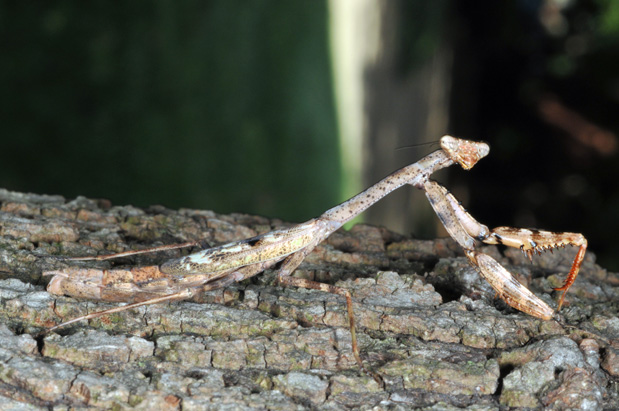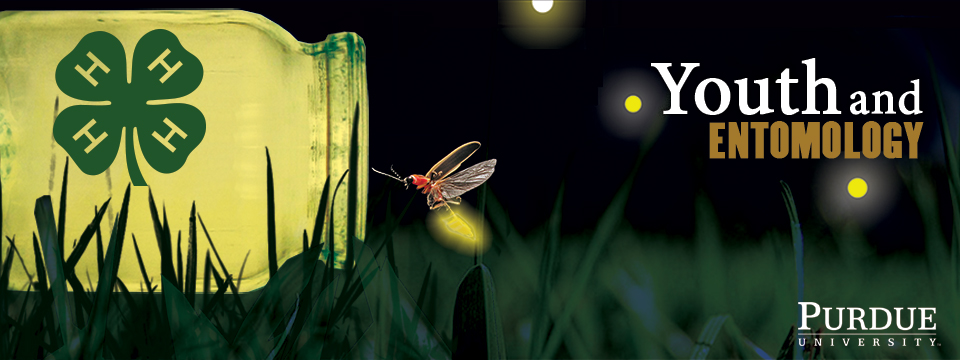

|
|
Praying Mantid adult
(John Obermeyer, Purdue University) |
|
Common Name: Praying Mantid - adult
See also: larva | benefit Scientific Name: Mantidae: several species Status: beneficial generalist predator Beneficial Stage: immature and adult Biology: Praying mantids may be one of the most easily recognized insects. They have a large triangular-shaped head with two large, compound eyes and characteristic raptorial front legs that are normally held together as if in prayer. Their bodies are long and narrow, and they have leathery wings that may or may not extend beyond the abdomen. Mantids vary greatly in size but generally range anywhere from 2/5 to 4 inches in length. Camouflage is very important to mantid survival, and colors vary from light greens to browns and pinks. Various species have evolved not only to blend in with the foliage, but also to mimic it, appearing as either living or withered leaves, sticks, tree bark, blades of grass, flowers, or even stones. Praying mantids eat insects and other invertebrates such as beetles, flies, butterflies, crickets, grasshoppers, and even spiders. They pose on plants with their spiny front legs held in front of them, ready to strike, and capture any insect that comes close. |
 |
||||||||||||||||
|
|
|||||||||||||||
|
Purdue Extension Entomology, 901 West State Street, West Lafayette, IN 47907 USA, (765) 494-4554 Department of Entomology | College of Agriculture | Extension © Purdue University | An equal access/equal opportunity university | Integrity Statement | Copyright Complaints | Maintained by ENTM IT Trouble with this page? Disability-related accessibility issue? Please contact us at entmwebmaster@purdue.edu so we can help. | ||||||||||||||||
